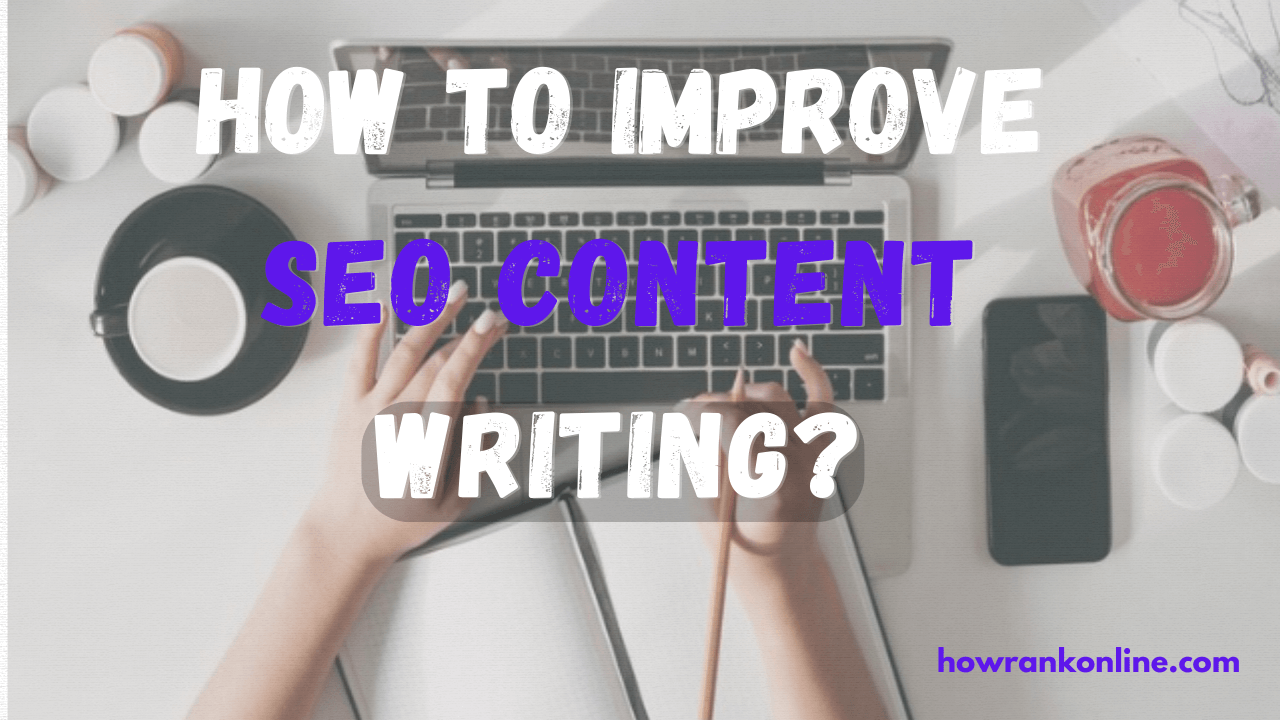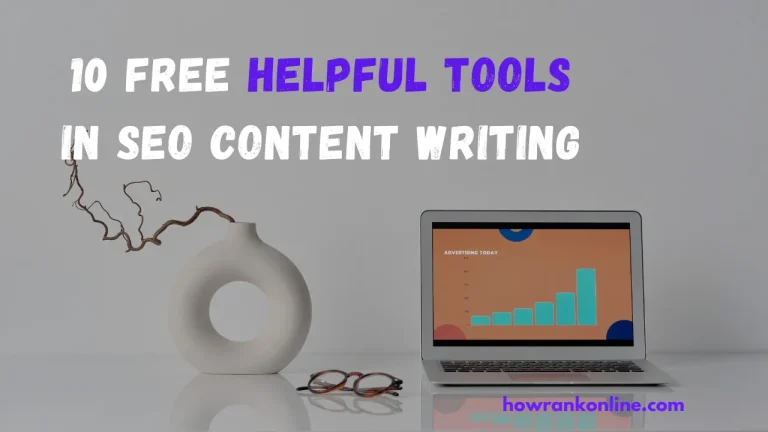Why is SEO content writing important?
Without effective Search Engine Optimization (SEO), your online content may struggle to achieve high rankings on search engine results pages (SERPs). This could significantly impact your ability to reach and engage your intended audience. Moreover, it could diminish the perceived credibility and authority of your content.
Recent research, such as a study conducted by Search Engine Journal in 2020, underscores the importance of SEO by revealing striking statistics about clickthrough rates (CTRs) on SERPs. For instance, websites occupying the top position on the SERP enjoy a substantial CTR of 25%, whereas those in the second position experience a notable drop to 15%. By the time a website reaches the tenth position, the CTR diminishes significantly to a mere 2.5%. Beyond the first page of search results, the likelihood of users discovering your website organically diminishes even further.
This underscores the critical importance of appearing on the first page of search results. Failing to do so drastically reduces the organic visibility of your website, resulting in fewer opportunities to attract leads and, ultimately, generate revenue. While advertising can drive traffic to your site, it requires financial investment. Alternatively, investing time and effort in SEO content writing presents a cost-effective strategy. Unlike advertising campaigns, effective SEO content writing can generate organic traffic over an extended period, providing long-term benefits for your website’s visibility and success.
The Basics of SEO Content Writing
When embarking on SEO content writing, grasping the fundamentals is key. Here are essential principles to adhere to when integrating SEO into your writing process.
Keyword Optimization
Optimizing keywords involves strategically integrating relevant terms and phrases into your content to enhance its visibility and ranking. This facet of SEO holds immense significance as it aids search engines in comprehending your content better, thereby increasing its likelihood of appearing in pertinent search queries and attracting organic traffic.
To pinpoint the most effective keywords, thorough research is essential. You must identify precisely what your target audience is searching for and align it with the topic of your content. Achieving the delicate balance between seamlessly incorporating keywords in a manner that resonates with readers and satisfies search engine algorithms is crucial.
In the forthcoming tips section, we’ll delve deeper into the process of discovering keywords and effectively dispersing them throughout your content.
User Intent
User intent refers to the motivation or purpose driving a user’s search query. It’s about discerning what they genuinely aim to uncover when entering text into a search engine.
Typically, there are four main types of user intent:
Informational intent:
When users seek information or answers to their inquiries, they are often looking for definitions, explanations, how-to guides, or research materials.
Navigational intent:
When users seek information or answers to their inquiries, they are often looking for definitions, explanations, how-to guides, or research materials.
Transactional intent:
When someone is prepared to take action, they may be inclined to make a purchase, subscribe to a service, or book an appointment.
Commercial intent:
When individuals are conducting research on products or services with the intention to make a purchase in the future, they typically engage in activities such as comparing products, reading reviews, and seeking the best deals before reaching a decision.
Understanding user intent enables you to craft content that resonates with what people are seeking, thereby increasing the likelihood of appearing in search results. Moreover, user intent varies across industries and niches. For instance, the approach to SEO for lawyers differs significantly from that for marketers. Ultimately, the goal is to meet users’ needs and enhance their search experience.
Readability
Writing for SEO involves more than just inserting keywords into your content; it’s also about the manner in which you write. Merely incorporating keywords isn’t sufficient; you must also consider how your audience will perceive and engage with your content.
This is where readability becomes crucial.
Readability entails finding the right balance between optimizing for search engines and ensuring that your content remains enjoyable and valuable to human readers. Alongside optimizing your content with keywords and internal links, it’s essential to prioritize user experience. Adopt a reader-friendly approach by using clear and concise language, avoiding jargon, and employing headings to enhance scannability.
As you write and edit your content, ask yourself: Is this easy to comprehend? Does it flow logically? Is it engaging? If any of these questions yield a negative response, consider making adjustments to enhance the readability of your content.
Historical Optimization
Every SEO writer understands that an evergreen blog post is an ongoing project, even after its initial publication. With algorithm updates and competitors vying for the same keywords, search results are in a constant state of flux.
This underscores the importance of having a robust content update strategy to keep older web content fresh and relevant in search engine rankings. This strategy is commonly referred to as historical optimization.
To identify which blog posts require updates, it’s essential to conduct a thorough content audit to pinpoint underperforming or outdated pieces. Subsequently, devise a plan to enhance these posts. This typically involves refreshing the content by incorporating new information, eliminating outdated content, optimizing keywords, and enhancing formatting and readability.
Table of Contents
1. Start with keyword research
Did you know that Google processes over 70,000 search queries every second? It’s an astonishing figure, highlighting the immense volume of online searches happening constantly.
To stand out amidst the clutter of search engine results pages (SERPs) and surpass your competitors, it’s crucial to target the specific keywords and phrases that your potential customers are actively searching for. After all, how else will they discover your content and website?
Begin by utilizing a keyword research tool. Platforms such as Ahrefs and Google Keyword Planner provide valuable insights into user search behavior and the popularity of various queries.
For a deeper understanding of how Ahrefs can enhance your SEO keyword research and overall strategy, explore our case study and exclusive interview here.
Google Trends is another invaluable resource for gauging keyword popularity over time. If you notice a steady decline in searches for a particular keyword, it’s a sign that it may not be the optimal choice for your marketing efforts. Conversely, rising trends indicate potential opportunities for targeting.
When you’re in need of fresh keyword ideas, don’t hesitate to draw inspiration from your competitors. Competitive intelligence tools allow you to uncover the keywords for which their domains currently rank. If these keywords are relevant to your business, consider incorporating them into your strategy.
However, it’s important to recognize that the most obvious keywords may not always align with your strategic goals. Furthermore, your focus keywords will evolve over time in response to shifting trends, changes in terminology, or expansions in your product/service offerings.
Regularly conduct keyword research to ensure that you’re consistently focusing on the right keywords for your target audience and capitalizing on essential ranking opportunities.
2. Use headings to your benefit.
Headers play a crucial role in helping Google’s web crawlers comprehend the structure of your blog post and its individual sections.
Imagine these crawlers as readers who are quickly scanning through your blog. They seek a concise overview of what your article will discuss, which is provided by your H1 header. Subsequently, your H2s, H3s, and H4s serve to break down the subtopics covered within the piece.
Therefore, it’s imperative that your subheaders accurately reflect the content within the body of your post and incorporate high-intent keywords. By using the right keywords—those frequently used by your target audience—you significantly enhance your chances of ranking prominently on the SERP.
3. Optimize your content for featured snippets
Featured snippets on Google provide direct answers to search queries, making them highly valuable for users seeking quick information. For instance, a search for “How do you write a blog post?” might prompt Google to display the best answer in a featured snippet.
To secure a featured snippet, it’s crucial to provide a thorough and concise answer to the query. For example, if the search term is “How to screenshot on mac,” you can structure your content with a clear title such as “How to Take a Screenshot on a MacBook Computer” followed by step-by-step instructions in a numbered or bulleted list.
Include part of the question in your answer to optimize for featured snippets. For instance, begin your paragraph with “To take a screenshot on your MacBook, here are the steps…”
Moreover, start each sentence with an actionable verb, such as “click” or “select.”
For keywords requiring definitions, keep the answer within 58 words to maximize the chances of capturing the featured snippet.
4. Write for humans, not search engines
Amidst the myriad SEO guidelines, it’s crucial not to lose sight of the fundamental fact: when users search on Google, they’re seeking answers. The most effective strategy for boosting your ranking prospects is by crafting high-quality blog posts.
What does this entail? It involves providing thorough answers, organizing content into scannable sections with clear subheaders, and incorporating visual aids.
Maintain a deep understanding of your buyer personas, including their motivations, challenges, and interests. Select topics that resonate with your potential customers and address their pain points effectively.
While SEO tools can assist with technical aspects of your site, consider leveraging content writing SEO tools to produce accurate, concise, and reader-friendly content that ranks well and captivates audiences. Some tools even gauge content engagement metrics, revealing insights such as time spent on a page, navigation patterns, and scroll depth.
Here’s a pro tip: Simplify the writing process by outlining your main thoughts and then utilizing an AI tool like HubSpot’s free AI blog writer to generate a draft. Afterwards, infuse the draft with personal touches and optimizations to ensure it’s engaging and enjoyable for human readers.
5. Optimize your title
Even with a well-crafted, SEO-friendly post body, a lackluster headline could hinder your performance in the SERP.
When titling your post with SEO in mind, aim for something attention-grabbing that also incorporates your primary keyword. Here are a few tips:
- Utilize numbers: For example, “5 Ways to Rock a Matte Lipstick.”
- Include your offer in the title: For instance, “How to Write a Cover Letter [+ Free Template].”
- Add a teaser: Try something like, “We Tried the New [Insert App Name] App: Here’s What Happened.”
6. Include keywords in your meta description.
Are you including meta descriptions in your posts? If your answer is “no,” then you’re likely missing out on potential traffic. Let’s delve into why they’re crucial.
So far, we’ve discussed various ways in which a blog post communicates with Google, including subheaders, keywords, and snippets. However, there’s more to consider.
Meta descriptions serve as another key area that Google crawls to determine search rankings. These descriptions typically consist of one to three sentences found beneath the title of a search result.
When crafting meta descriptions, remember to:
- Keep them concise.
- Incorporate one to two relevant keywords.
- Make them compelling to entice clicks. Given the abundance of similar posts, your description should stand out.
Most content management systems (CMS) feature built-in meta description boxes, making it convenient to utilize this function without extensive searching.
Complete SEO Starter Pack
An introductory kit to optimize your website for search.
- Increase your organic traffic.
- Plan your keyword strategy.
- Debunk SEO myths.
- Build a blog strategy.
7. Add alt text to images
When adding images to your post, whether they’re featured or included in the body, it’s essential to include alt text. Alt text provides a description of the image, aiding Google’s understanding and assisting visually impaired individuals in comprehending the content of the post.
For example, if your article is about virtual events and you include an image depicting people attending a virtual conference, the alt text could be: “Image of individuals participating in a virtual event conference.”
Image Source:
The alt text for this image should read something like, “Businessman attending a virtual event sits at a desk while holding a pen.” This descriptive sentence includes the main keyword “virtual event,” allowing search engines to understand the context of the image. Even if the image is a stock photo, crafting a narrative that aligns with your blog post enhances its relevance and accessibility.
8. Resist the urge to keyword stuff
The aim is to achieve full optimization without overwhelming your page. Integrate keywords naturally, avoiding forced placements that could compromise readability.
For instance, if your keywords are “account-based marketing,” “startups,” and “sales,” refrain from a meta description like: “Sales for account-based marketing startups.”
Instead, focus on one or two keywords to maintain a natural tone. For example: “Are you seeking effective strategies to enhance your account-based marketing approach? Explore our research-backed techniques in this post.”
By employing this approach, you incorporate keywords while ensuring the content remains balanced. Remember, the ultimate goal is to cater to your audience. A poor reading experience may signal to Google that your post doesn’t adequately meet user needs.
9. Link to high-authority websites
As you develop your blog post, don’t hesitate to incorporate external links.
Linking to reputable websites provides readers with additional resources to deepen their understanding and demonstrates to search engines that you’ve conducted thorough research.
Nothing bolsters a blog post quite like research-backed statistics from authoritative sources. Compelling data strengthens your argument, fostering trust and credibility with your audience.
10. Aim for scannable, longer posts
In an era marked by short attention spans, one might assume that shorter blog posts are the preferred route. However, contrary to popular belief, search engines like Google actually favor longer, more comprehensive blog posts.
Consider this: the more content present on a page, the more clues search engines have to decipher the topic of your blog. At HubSpot, we’ve discovered that the optimal length falls between 2,100 and 2,400 words.
Yet, longer blogs run the risk of overwhelming readers. To counteract this, break down your content into easily digestible chunks. Transform lengthy sentences into shorter ones and limit paragraphs to three sentences or less. Additionally, utilize bullet points as they effectively grab attention and are easily consumed, particularly on mobile devices.
11. Link to other posts on your site
Linking to other pages or blog posts on your website aids search engines in creating an accurate sitemap and enables your audience to discover more of your content, establishing you as a trustworthy and credible source of information.
From the user’s perspective, internal links to valuable content prolong their stay on your site, diminish bounce rates, and heighten the potential for conversions. Isn’t that the ultimate goal?
When incorporating links to pages on your website or external sources, utilize natural language for your anchor text. Avoid spammy or generic calls to action like “top-rated cheap laptops” or “click here.”
Steer clear of forcibly inserting links to your top webpages, featured products, or discounted items. Include links that enrich the points articulated in your posts and seamlessly align with the subject matter.
12. Compress images for fast page load speed
Google prioritizes pages with fast loading speeds, as it enhances the overall user experience.
One of the primary causes of page lag is the presence of large, heavy images. If your post contains several images, each exceeding 100KB, it can significantly affect your page speed.
Fortunately, there are free applications, such as Squoosh. App, that compress images without compromising their quality.
If you suspect that your low ranking is attributed to slow page speeds, visit Google’s PageSpeed site for a complimentary analysis and recommendations.
13. Design a link-building strategy
Link building plays a pivotal role in determining your search ranking. Why is it so crucial? Imagine search results as a competition where the top spots are awarded to those receiving the most votes. Each webpage linking back to your site serves as a vote of confidence, bolstering the credibility of your content in Google’s eyes and propelling you higher in rankings.
To enhance link building, focus on creating posts that entice other websites or publications to include hyperlinks. Incorporate high-value assets in your blog posts, such as original data and thought leadership, to make them more appealing for linking. Another effective strategy is conducting interviews with experts, as this can attract traffic back to your website through backlinks.


